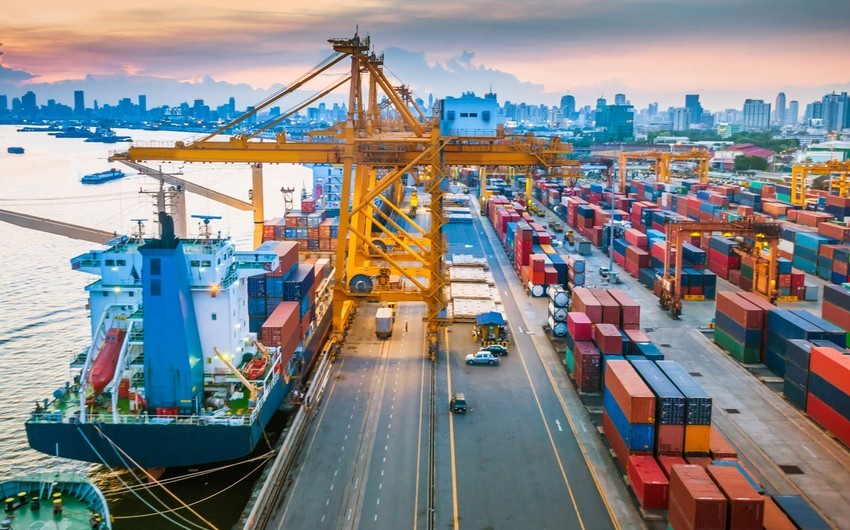As the world is anxiously watching events unfolding in Ukraine and the Middle East, and supply chains around the world come under unprecedented pressure, one transport route is quietly positioning itself as a potential savior. The Middle Corridor, also known as the Trans-Caspian International Transport Route, is a multimodal network connecting China to Europe via Kazakhstan, the Caspian Sea, Azerbaijan, Georgia and onwards to Europe via Türkiye or the Black Sea.
Although the Middle Corridor has been around for a long time, it has received new impetus in light of the geopolitical turmoil of recent months. With the closure of traditional routes through Russia and Ukraine, countries are looking for alternative routes for their goods, and the Middle Corridor is ideal for this purpose. It offers a shorter and safer route than sea transport and is a viable alternative to the Northern Corridor, which runs through Russia.
Recent studies by such organizations as the EBRD, OECD and the World Bank have identified a number of benefits of the Middle Corridor. Compared to sea freight, the Middle Corridor can reduce shipping times from China to Europe by several weeks. While land routes have traditionally been more expensive than sea routes, rising fuel prices and supply chain disruptions have made the Middle Corridor more competitive. The main advantages include increased security: the Middle Corridor passes through relatively stable countries, which reduces the risks associated with piracy, political instability and other factors.
However, as the IMF notes, a number of improvements need to be made to fully realize the potential of the Middle Corridor. As such, measures are needed to streamline procedures at border crossings to reduce delays, enhance automation through the digitalization of transport documents, and harmonize regulatory requirements, permits, and tariffs across Middle Corridor countries.

Significant infrastructure improvements are also needed, including expediting transshipments along the route, expanding the fleet at the Caspian Sea, developing railway capacity, and improving the road network. Cooperation among the countries involved and beneficial conditions to attract private sector involvement are crucial for achieving these goals.
To this end, several regional initiatives already exist. For example, in 2022, Azerbaijan, Georgia, Kazakhstan, and Türkiye signed the Roadmap for 2022–27 to accelerate the development of the Middle Corridor.
Reorientation of trade flows
The war in Ukraine has certainly been a catalyst for changes in trade flows in the Caucasus and Central Asia (CCA) region. In 2022, the CCA’s share in EU, Russian, and US nonhydrocarbon exports increased by 25, 22, and 53 percent, respectively. In addition, the CCA’s share in their nonhydrocarbon imports rose by 47, 43, and 27 percent, respectively.
Meanwhile, Russia’s shares in EU and US nonhydrocarbon exports and imports declined markedly. The CCA region also increased its share in China’s nonhydrocarbon exports, reflecting some reorientation of trade with greater traffic through the Middle Corridor, where transported volumes have risen sharply.
The CCA region’s footprint in global value chains has also expanded. Specifically, participation in global value chains—that is, the share of exports that is part of a multistage trade process—has increased in all CCA countries (except Tajikistan).
Azerbaijan is ahead of its regional neighbors in increasing participation in global value chains. This means the country is exporting more goods that are part of a multi-step production process, indicating deeper integration into the global economy.
At the same time, several CCA countries (Azerbaijan, Georgia, Kazakhstan, Uzbekistan) have increased their use of foreign inputs in their production and exports, surpassing the volume of their exports used in the production of other countries’ exports.
The current situation could have long-term geopolitical consequences, strengthening the region’s ties with other countries and potentially changing the balance of power in the region.
Thus, it is safe to say that the Middle Corridor can not only become a viable alternative route for trade between China and Europe, but also play an important role in the economic development of the Caucasus and Central Asia region. With the right investment and political will, the Middle Corridor can become a true beacon of hope in these turbulent times.
The Middle Corridor has the potential to become an important transport artery connecting East and West. In times of geopolitical instability and disrupted supply chains, it can become a viable alternative to traditional routes. With investment, collaboration and sustainable practices, the Middle Corridor can not only stimulate trade, but also contribute to development and stability in the region.


 https://static.report.az/photo/ba0fc3de-6c66-3427-bac9-b778b38f9661.jpg
https://static.report.az/photo/ba0fc3de-6c66-3427-bac9-b778b38f9661.jpg

